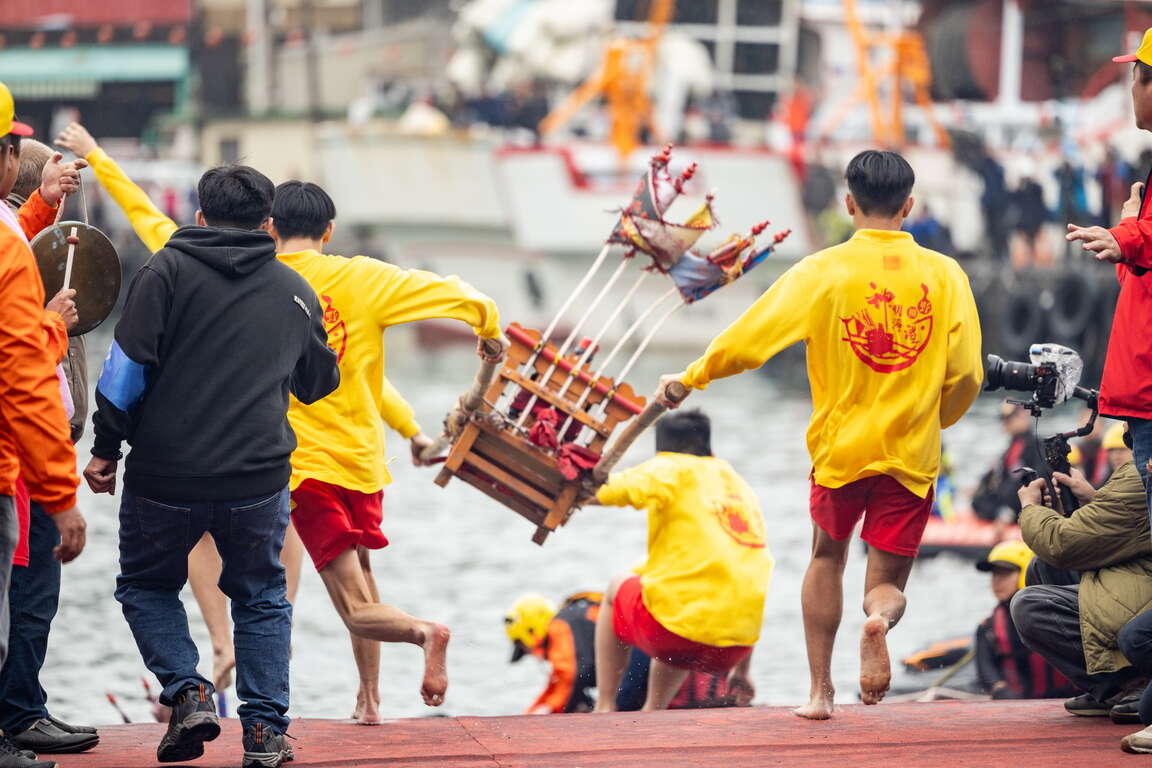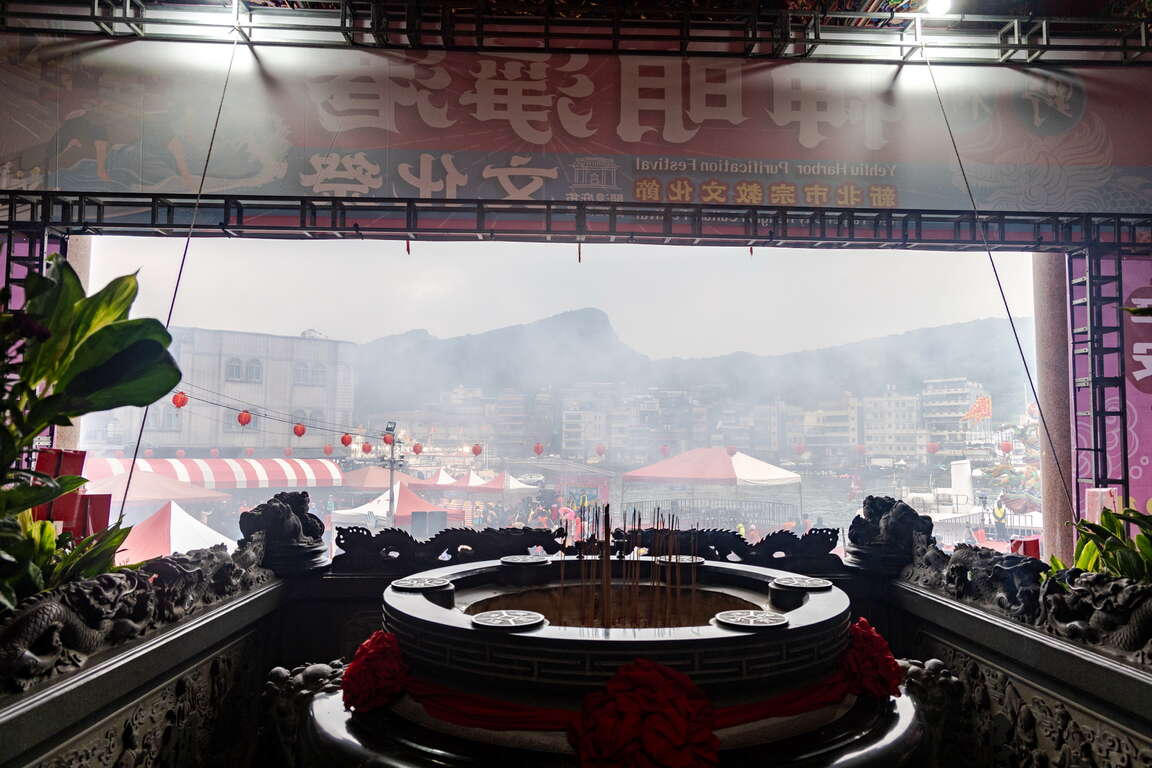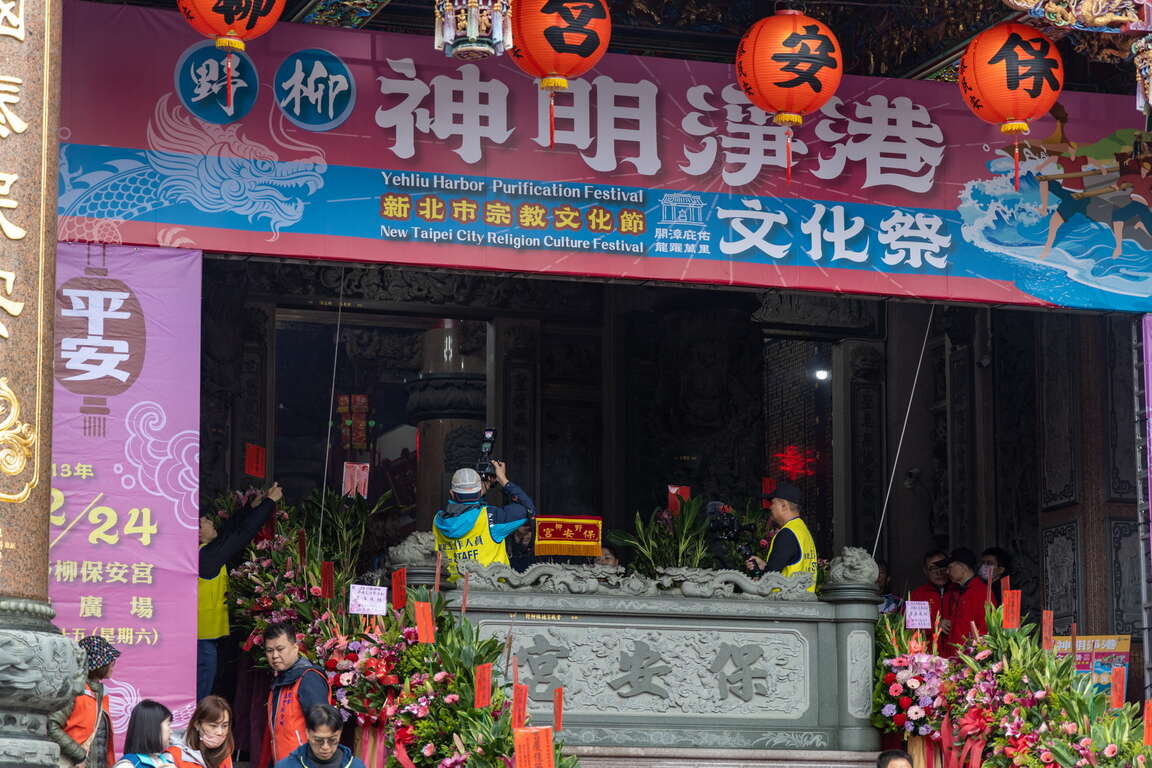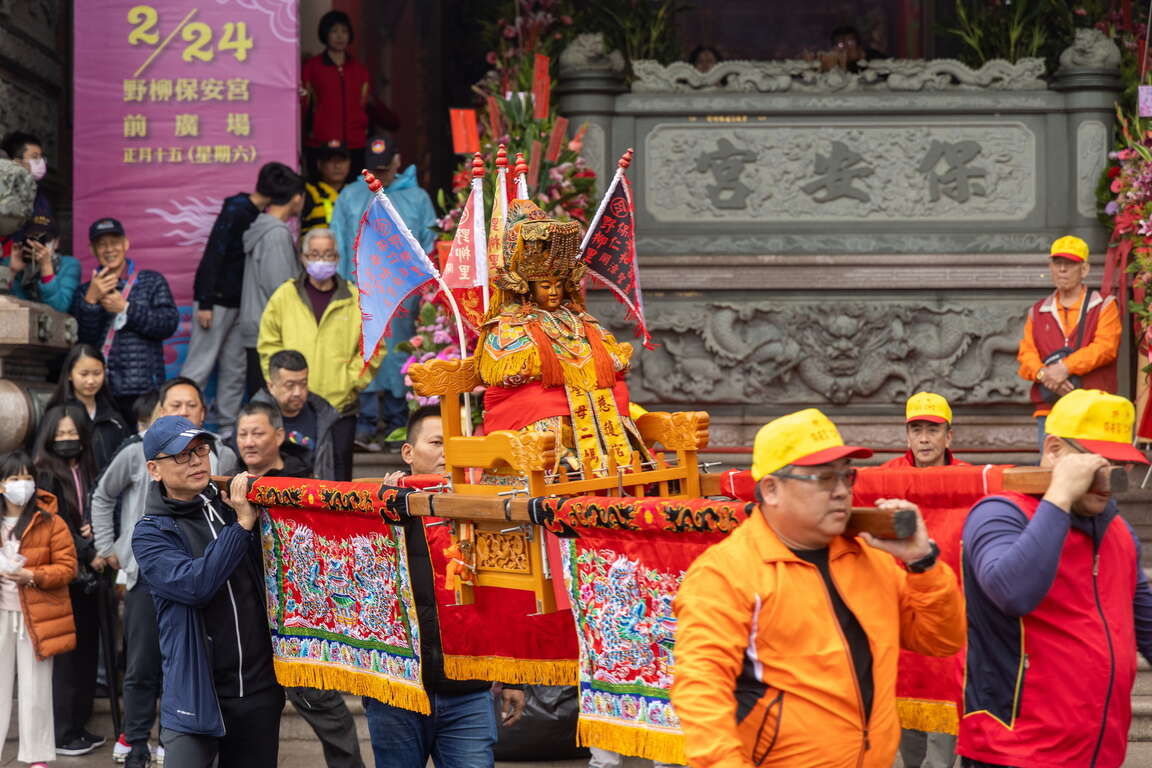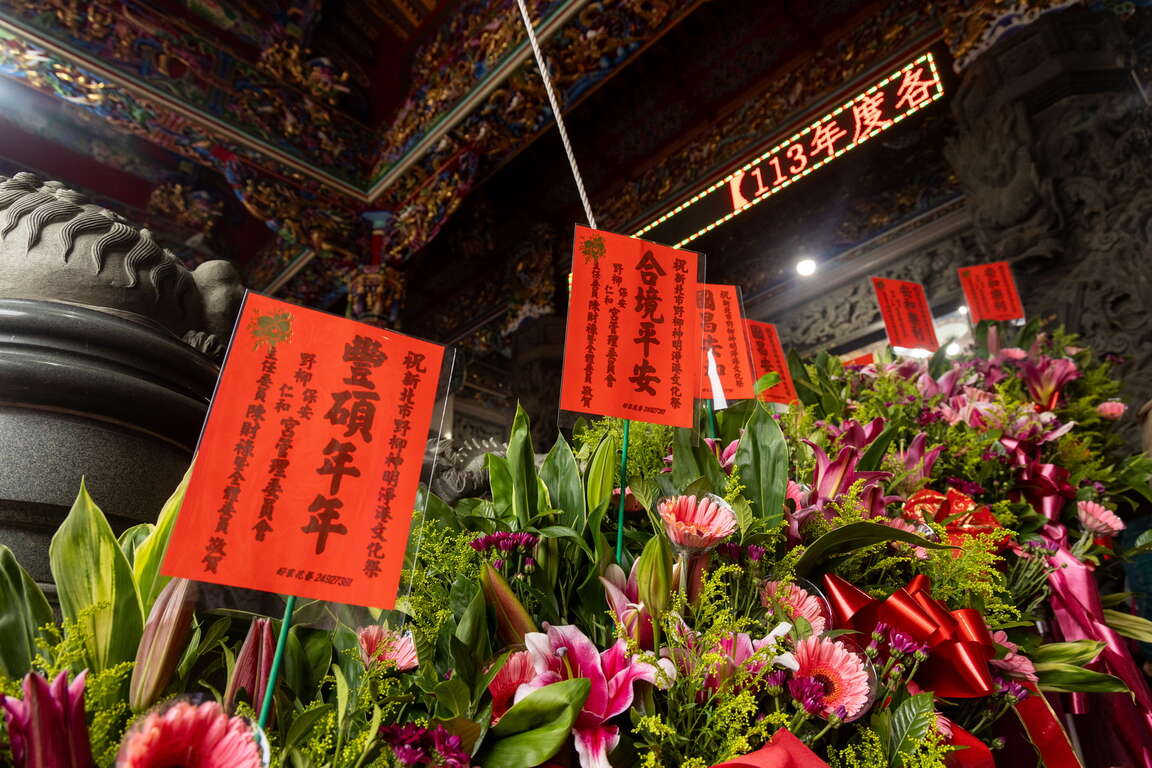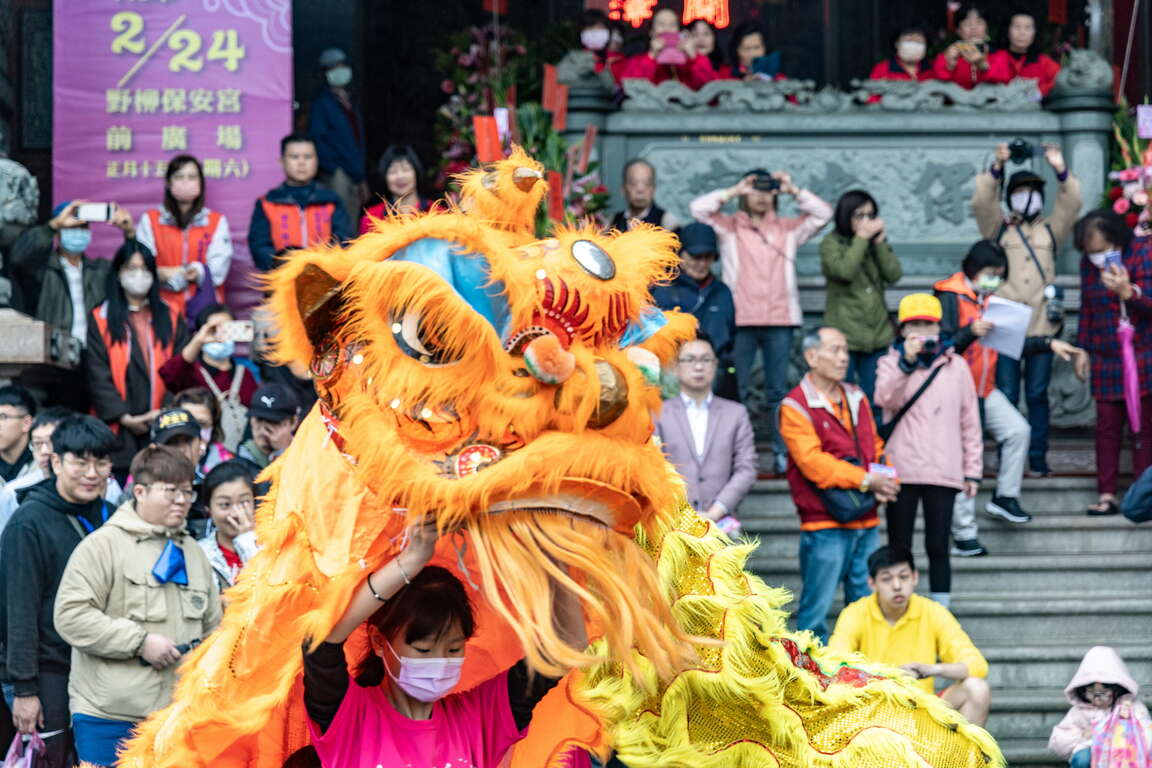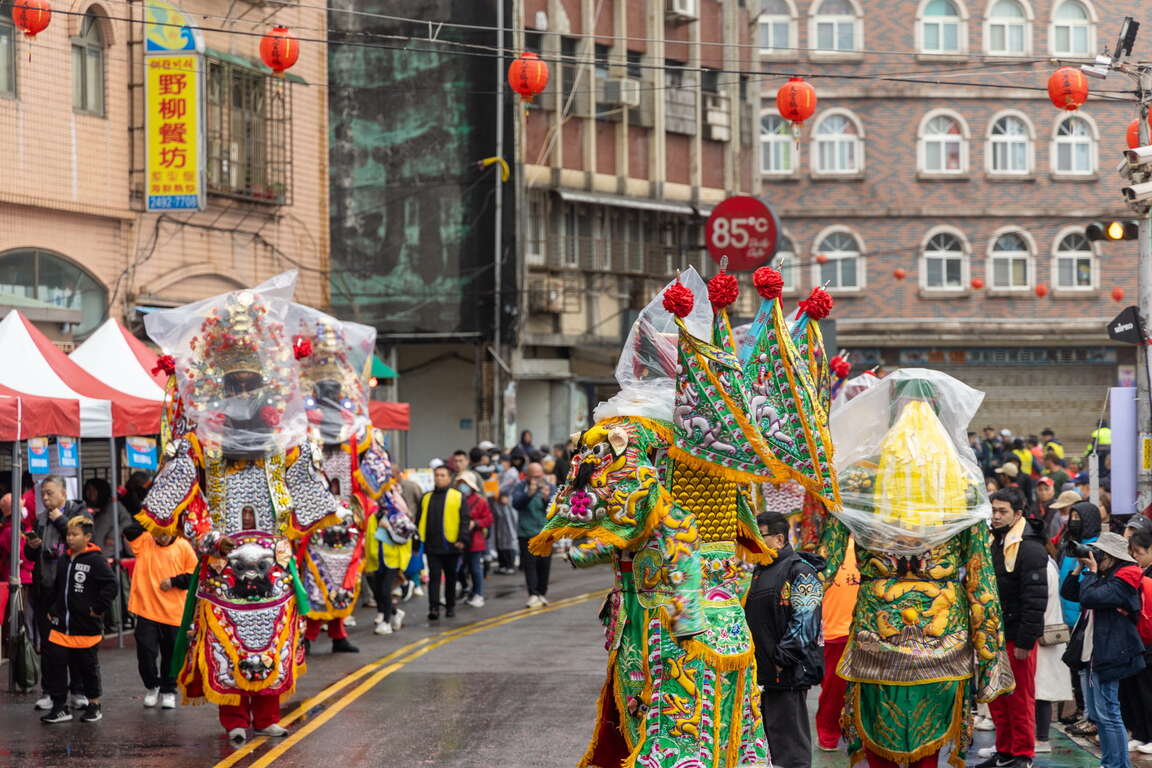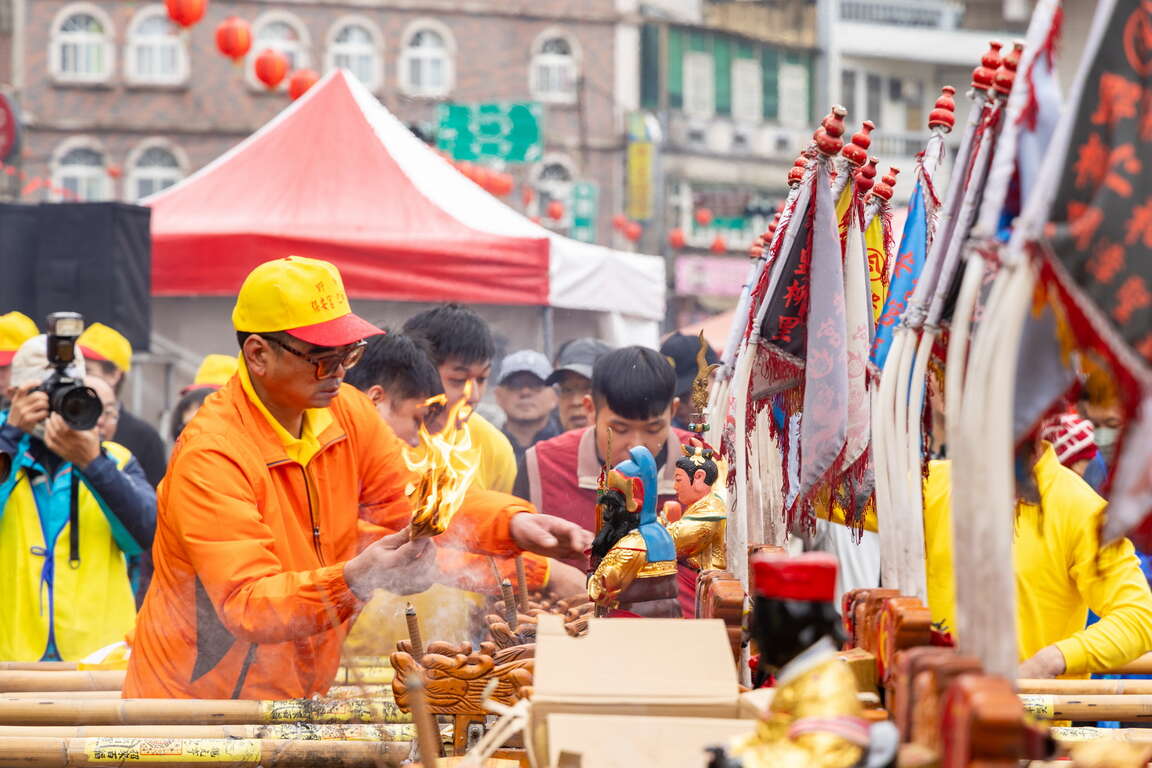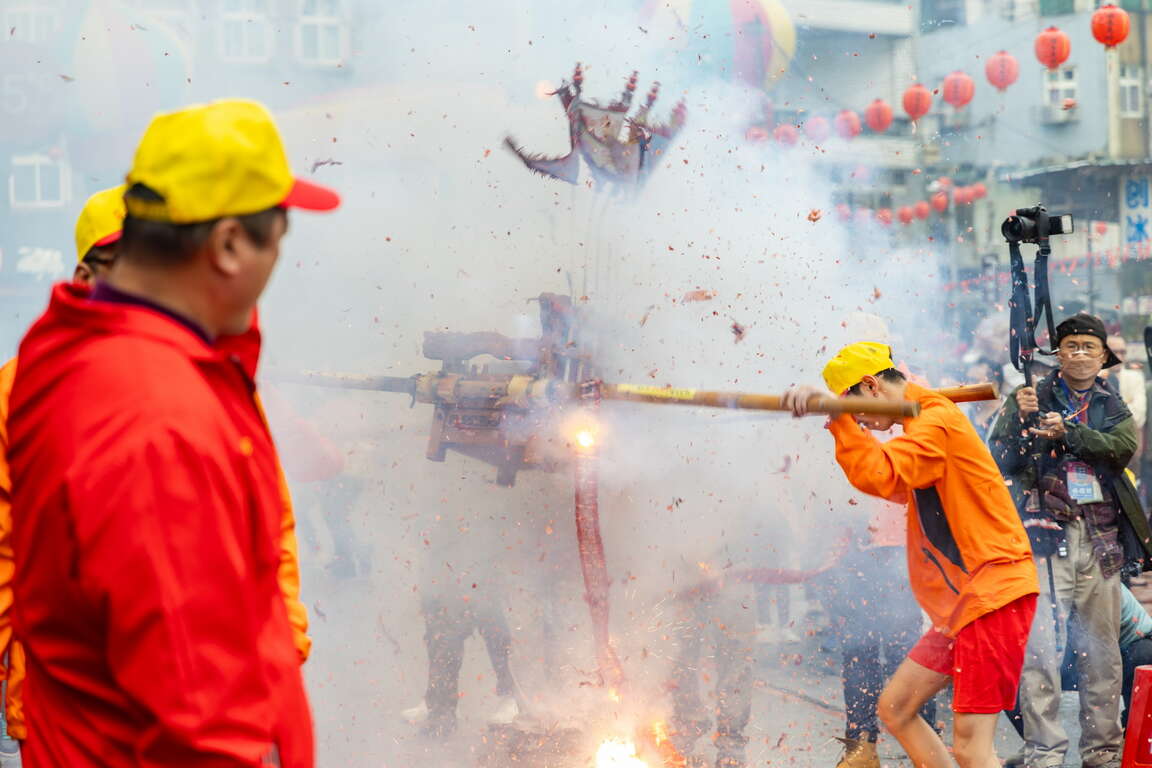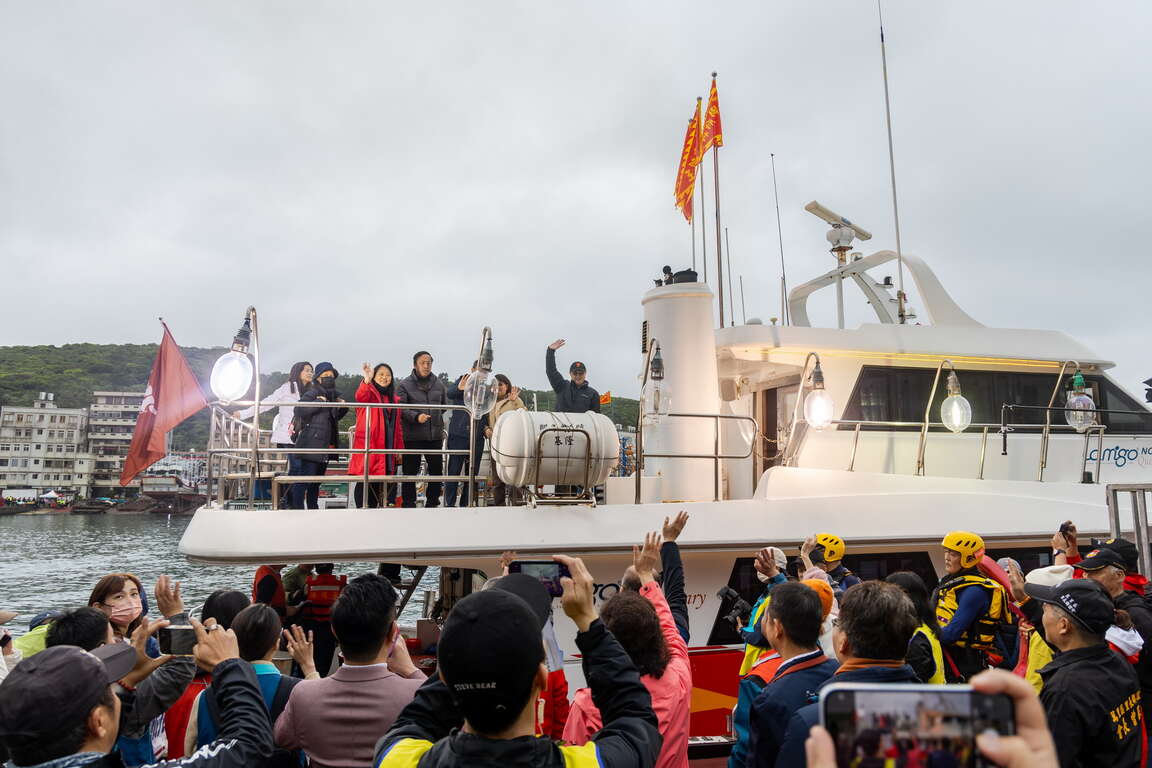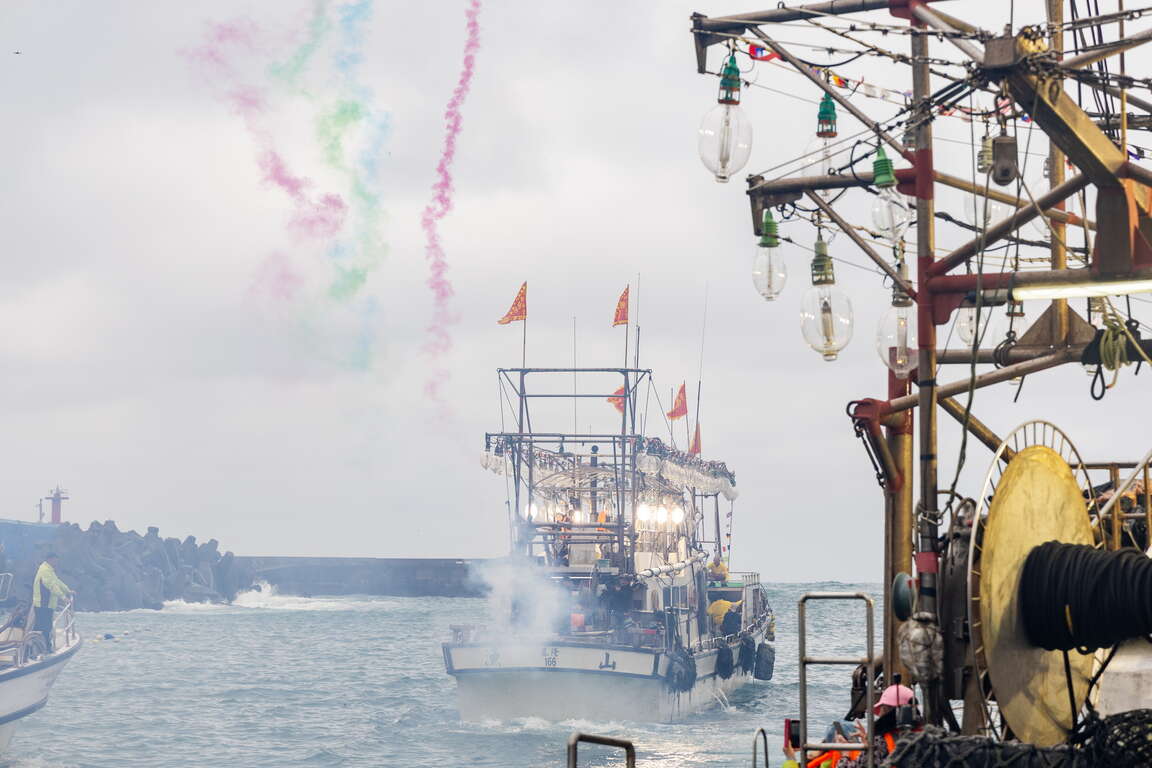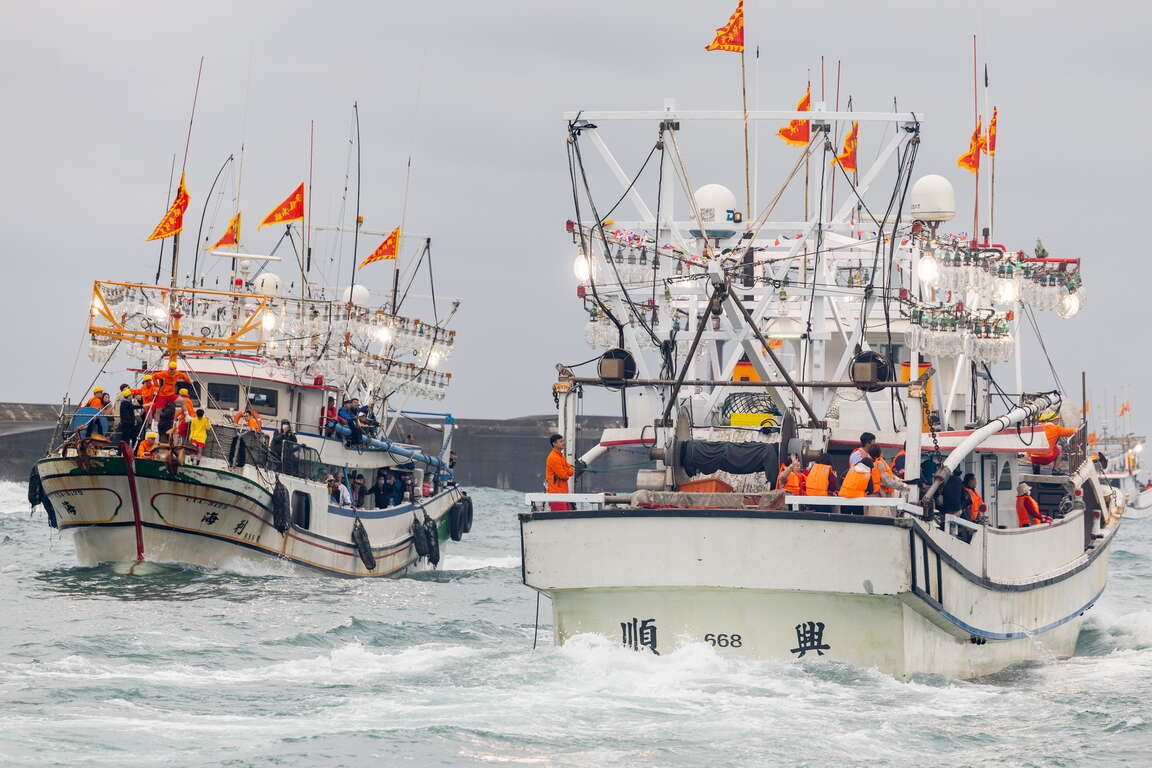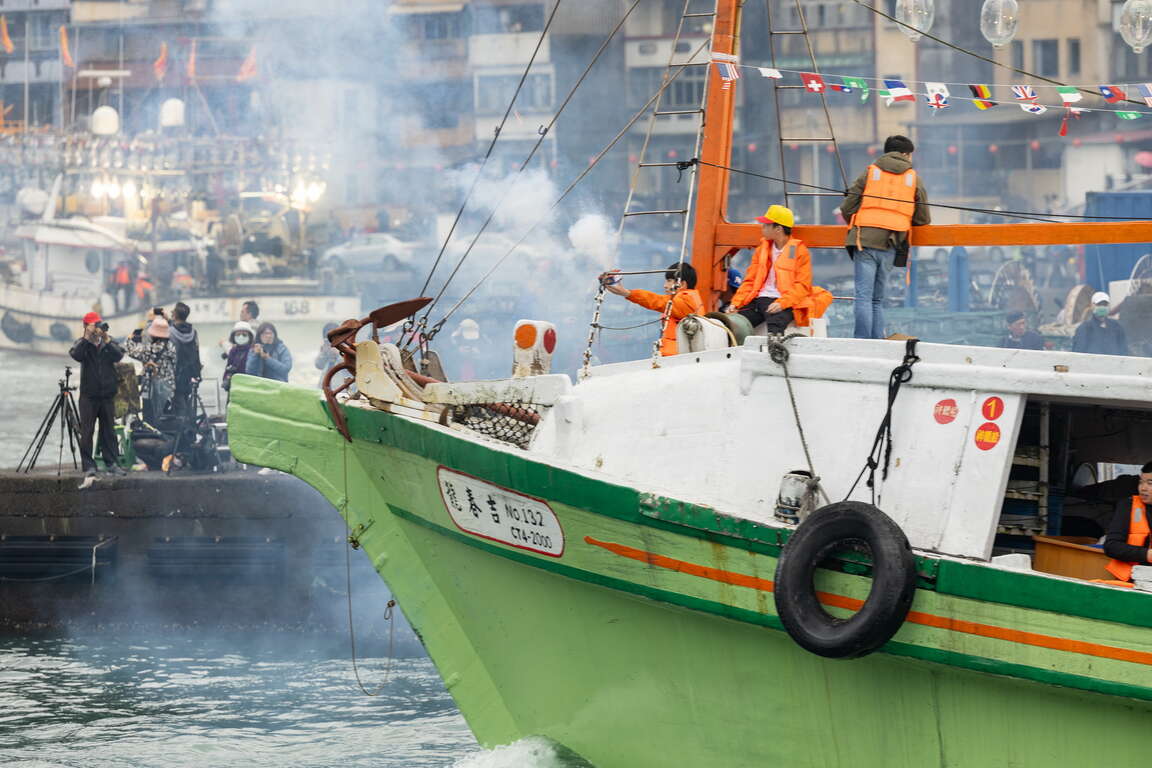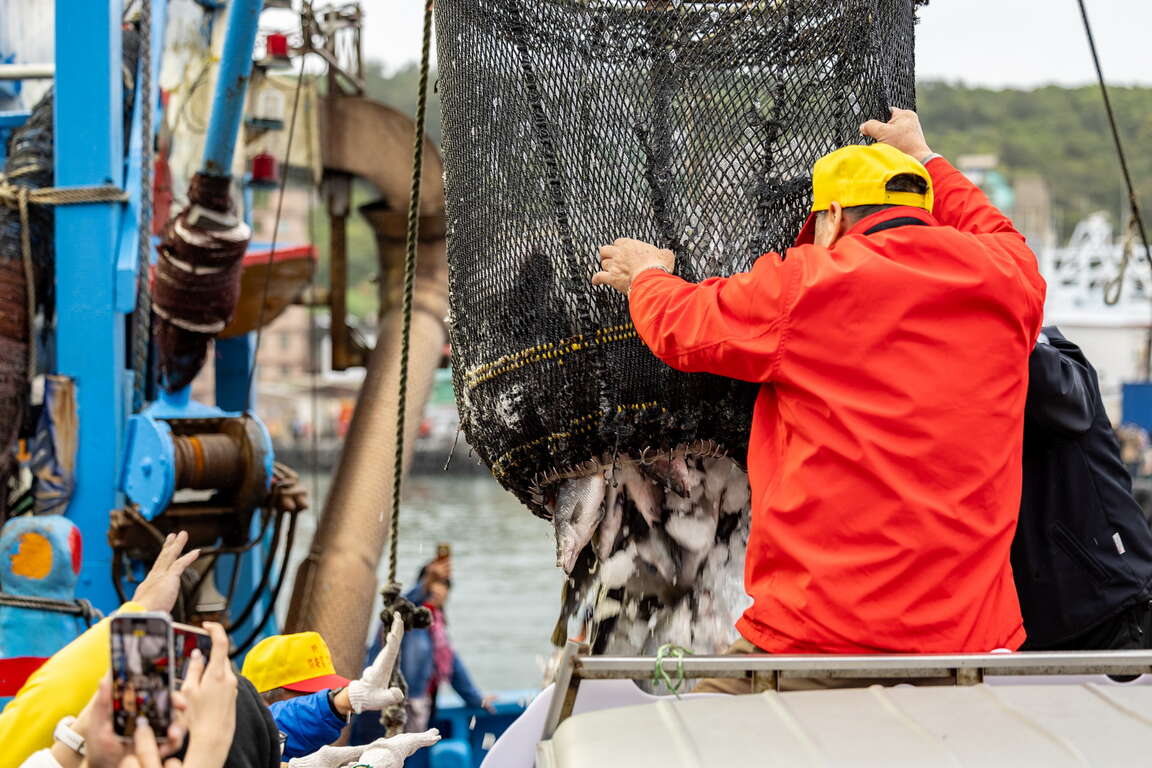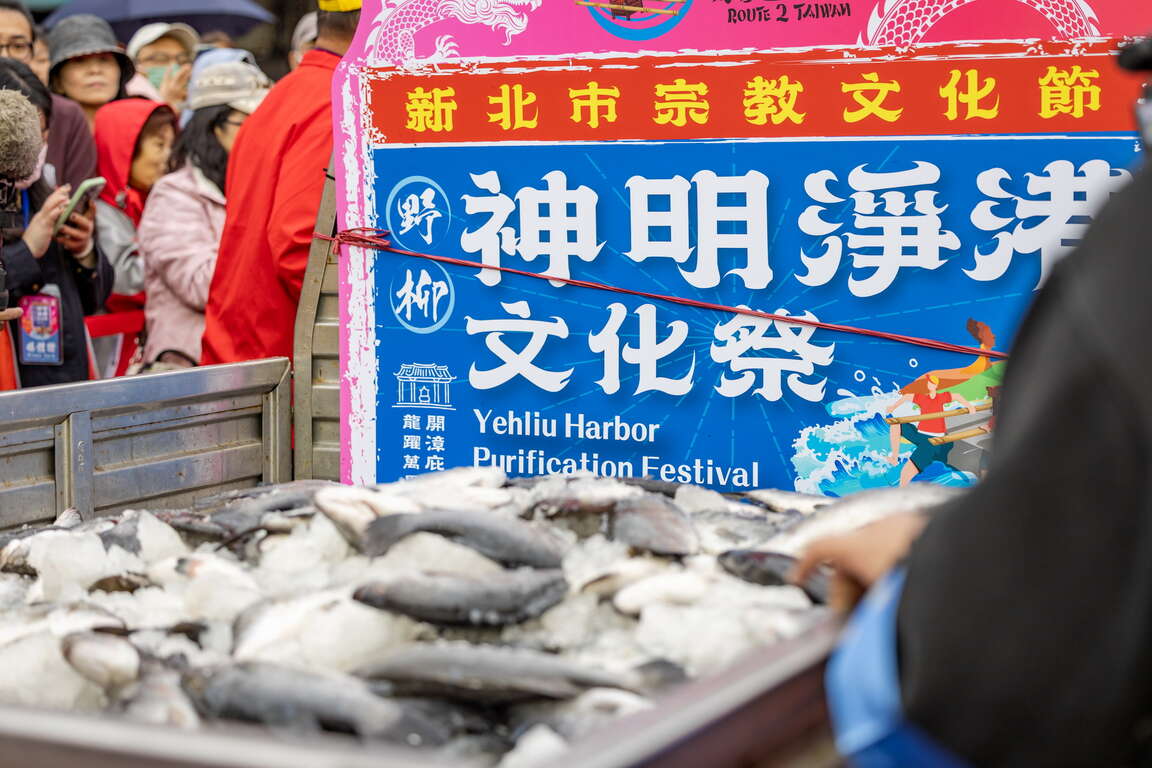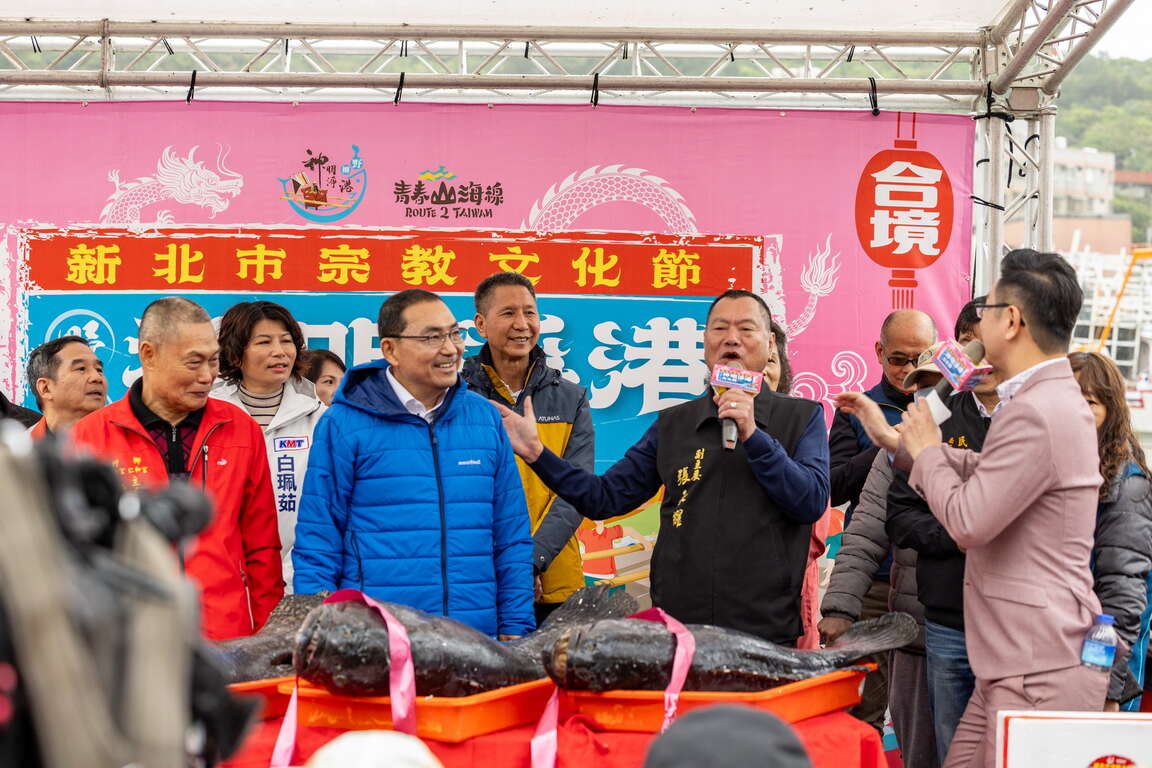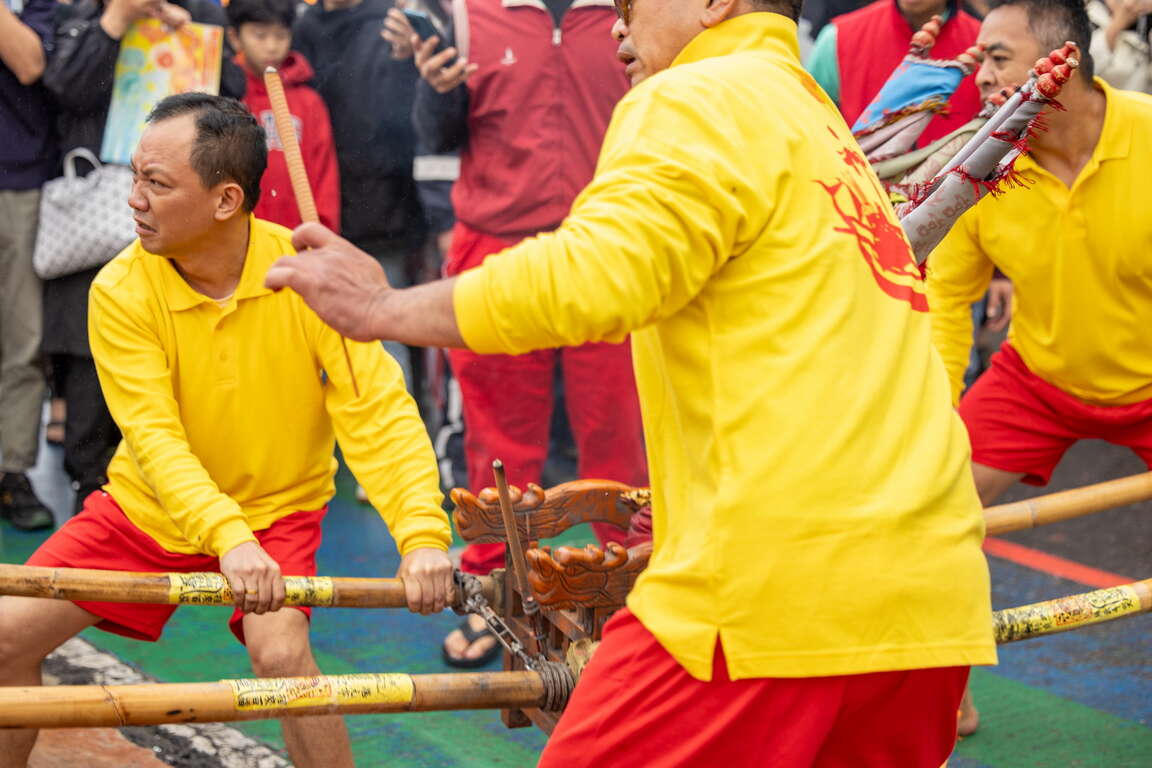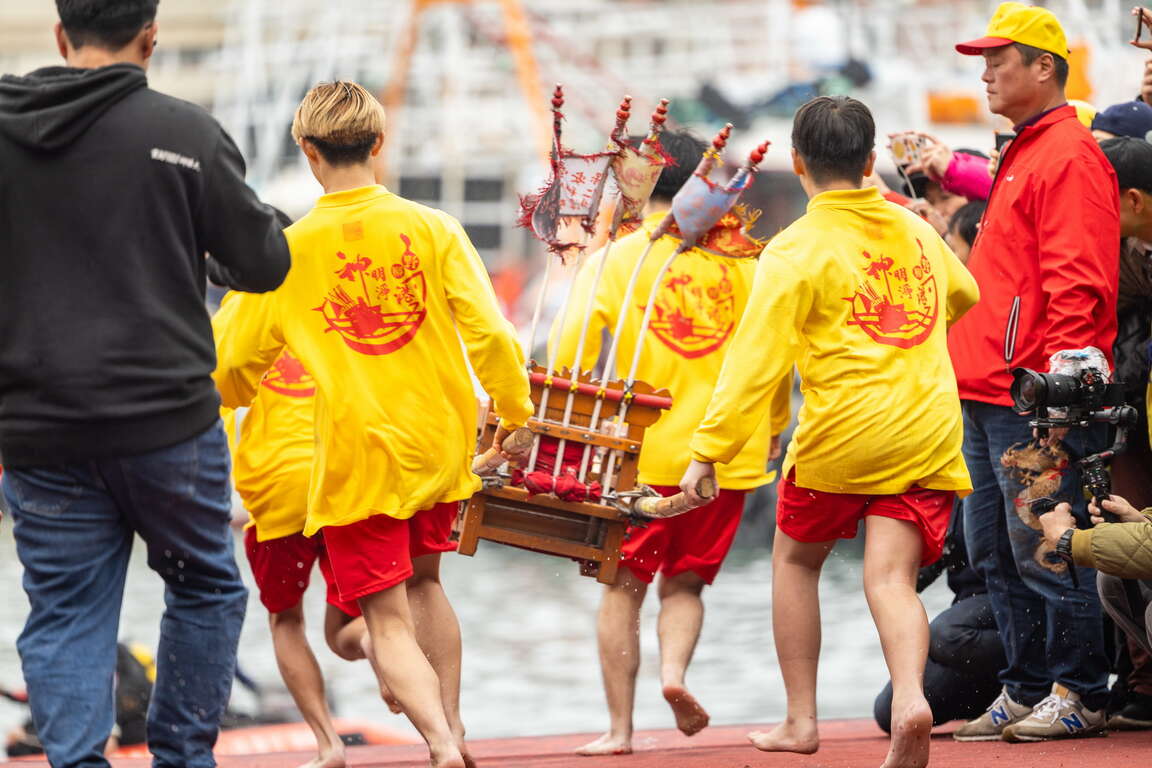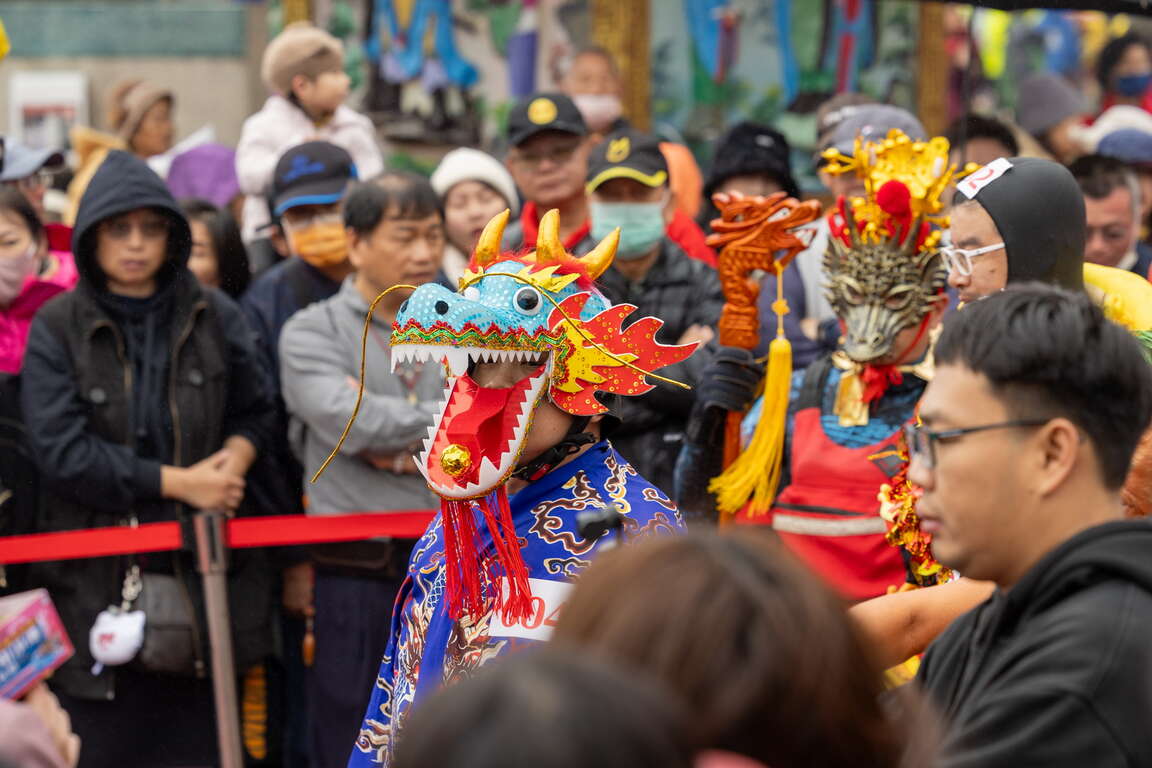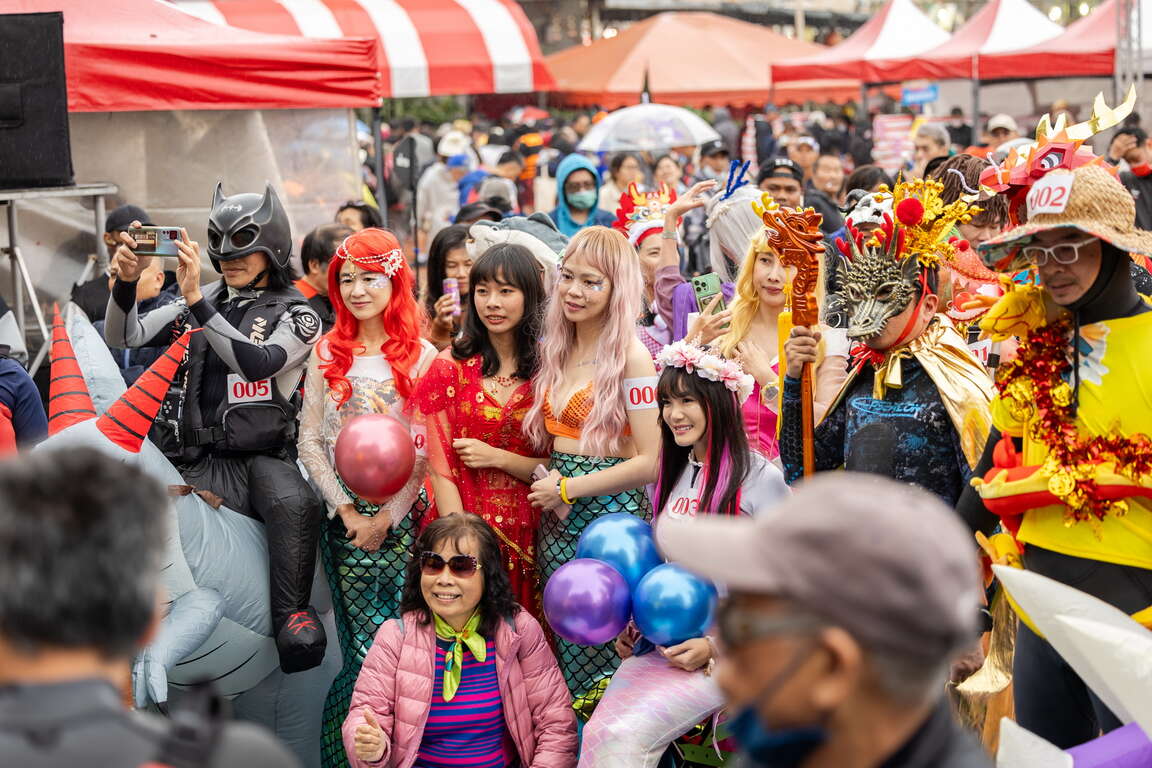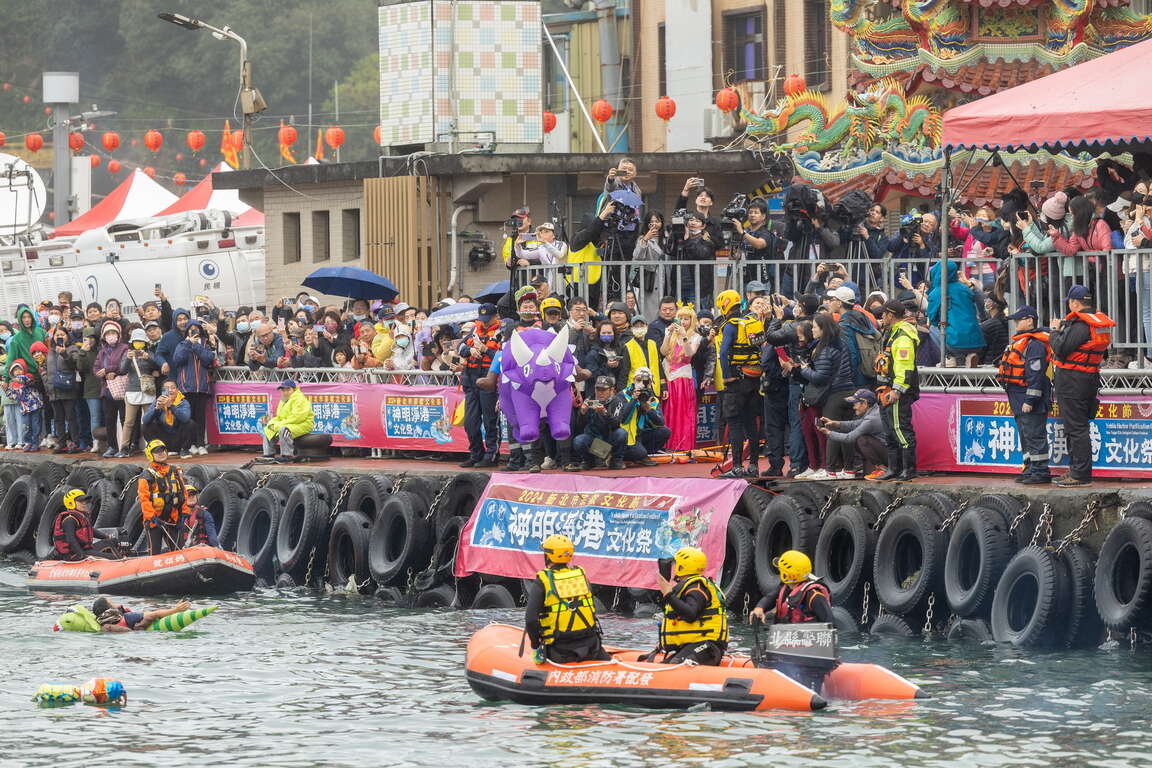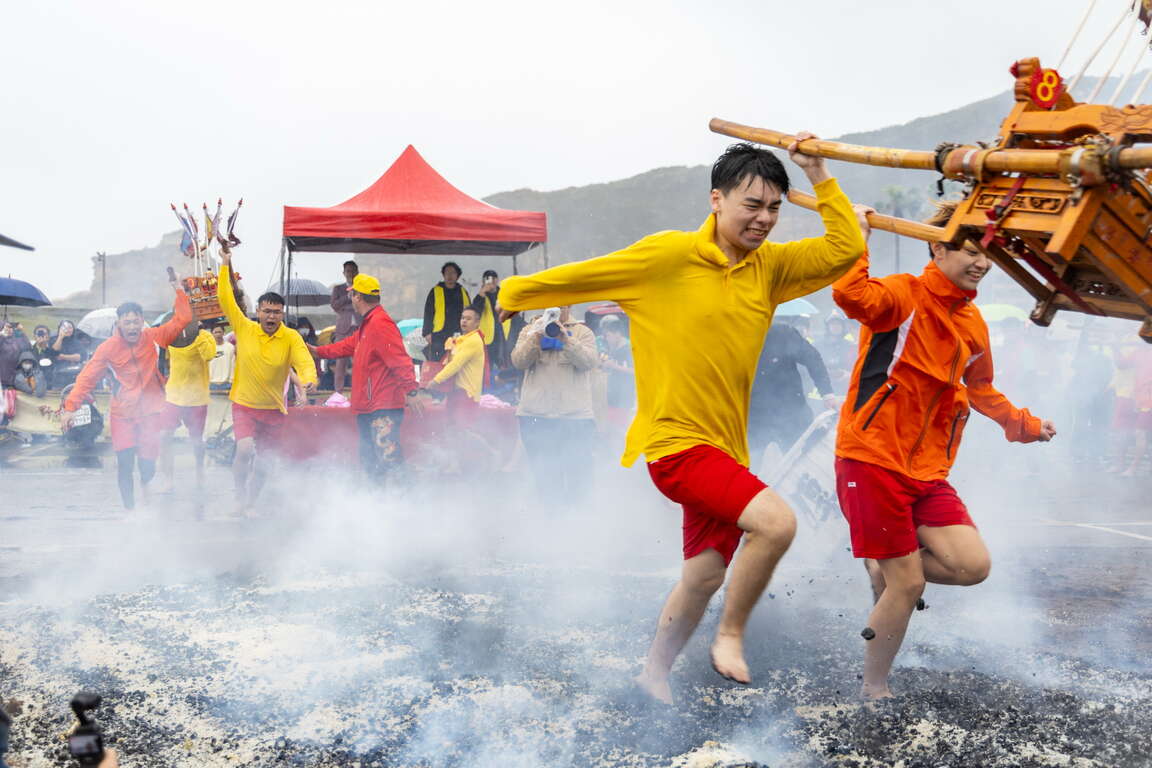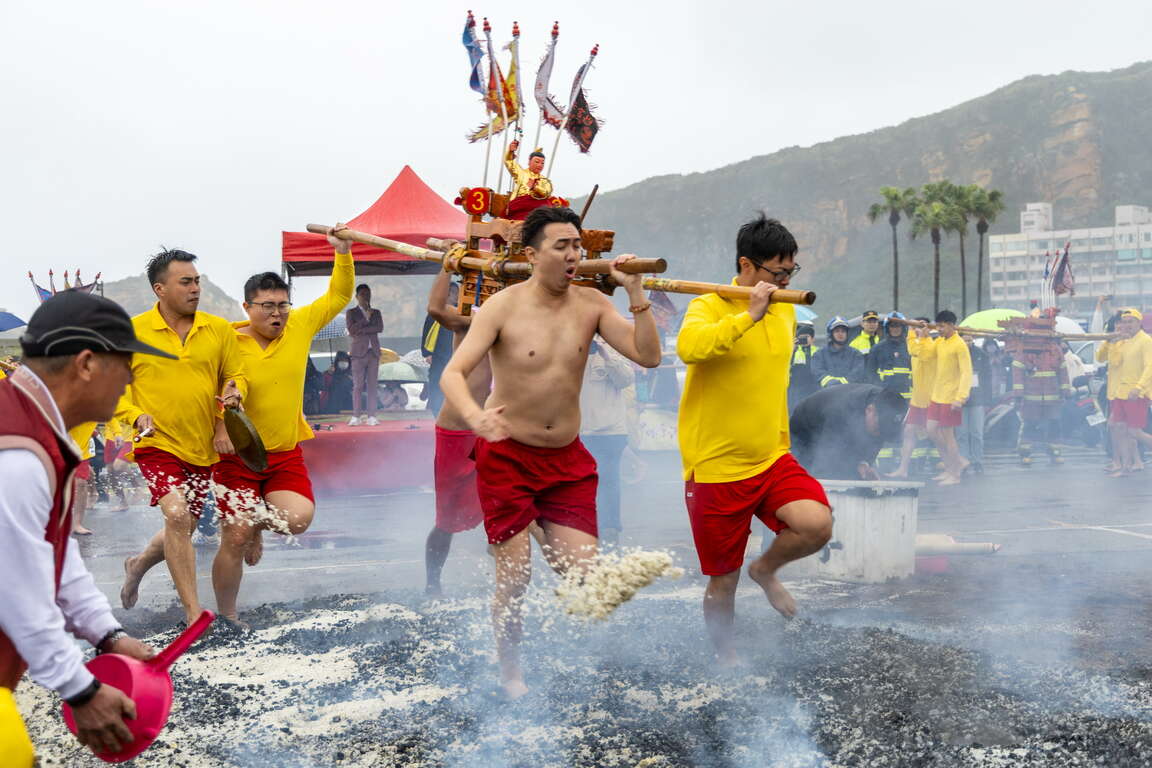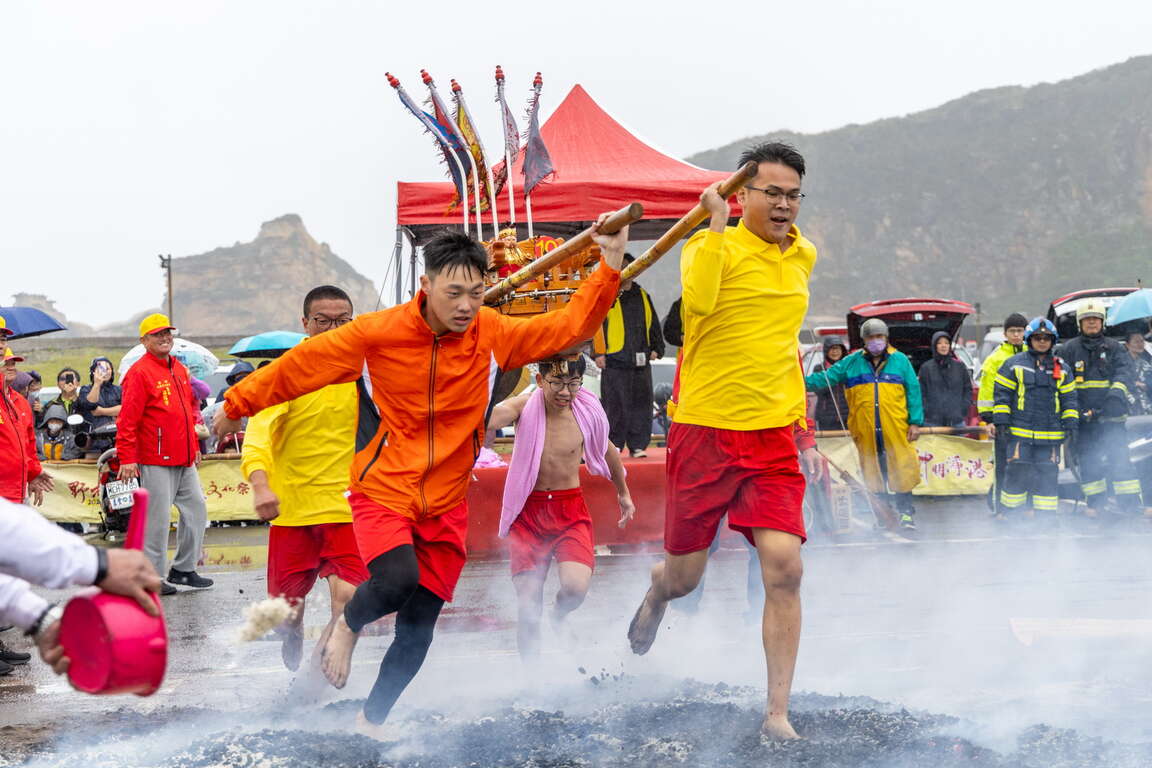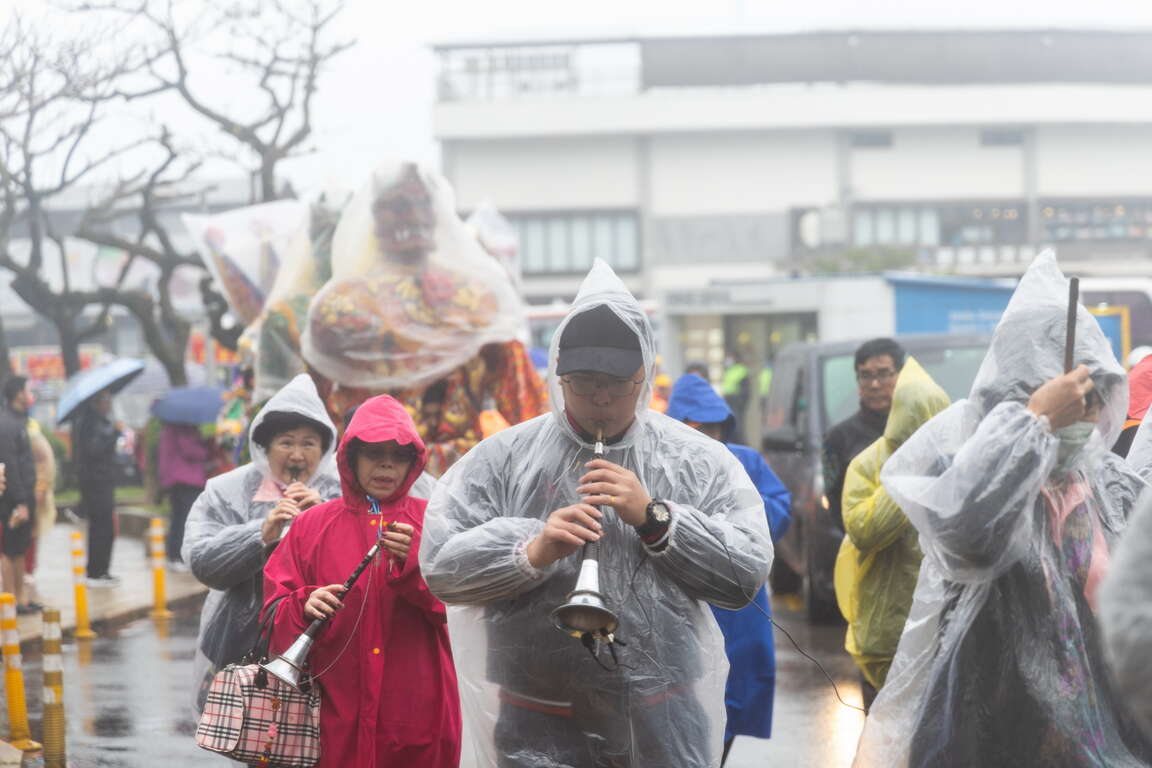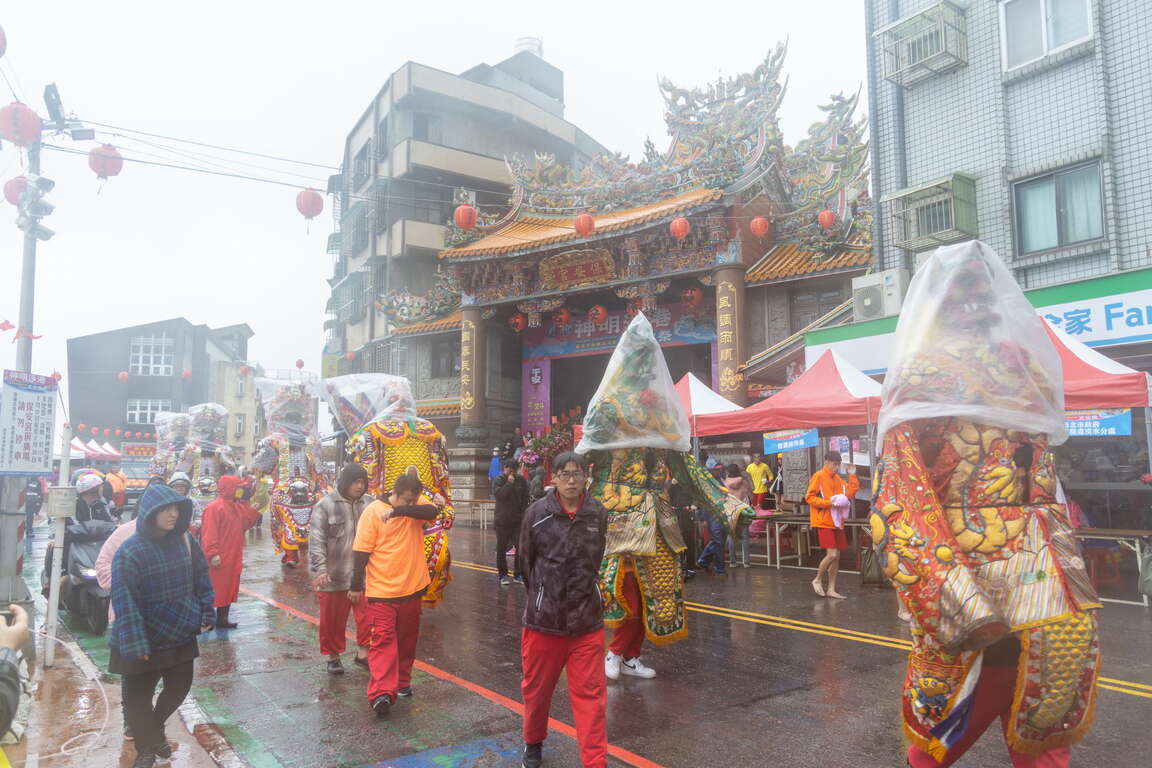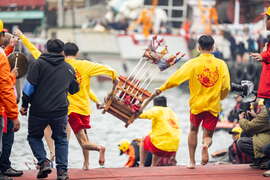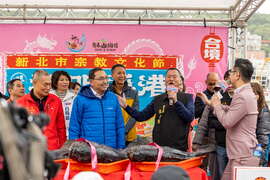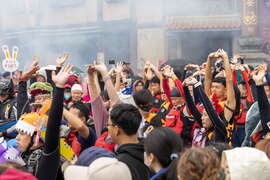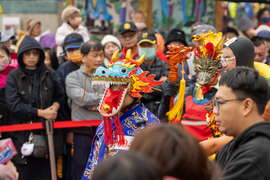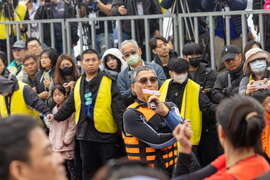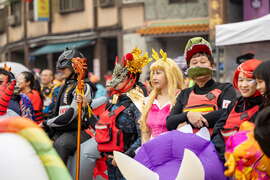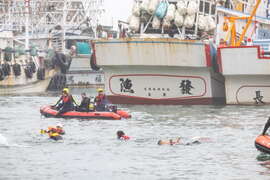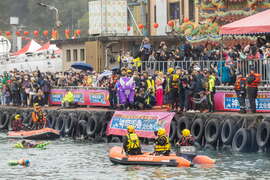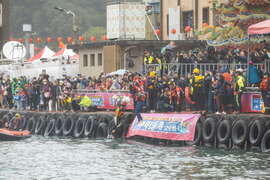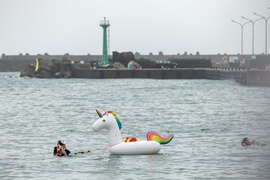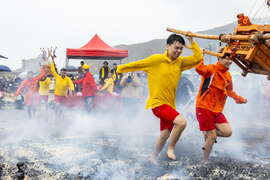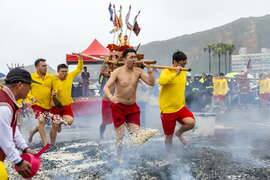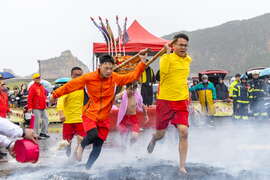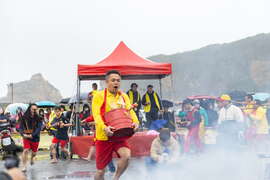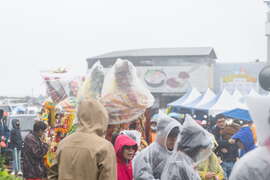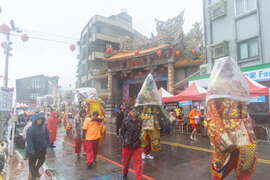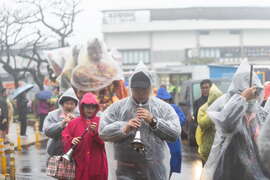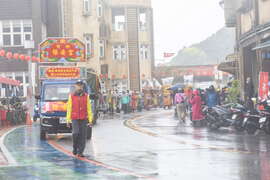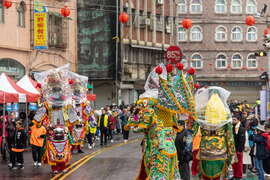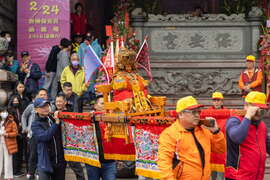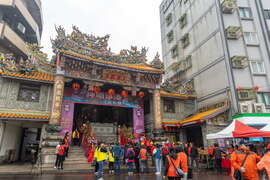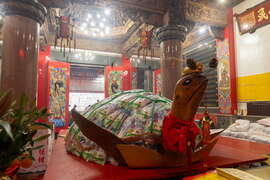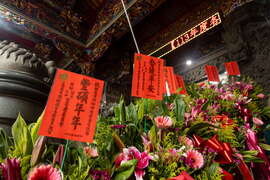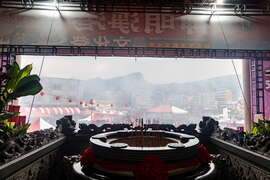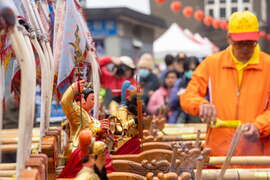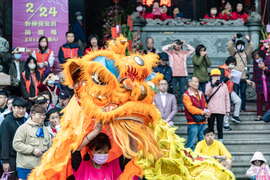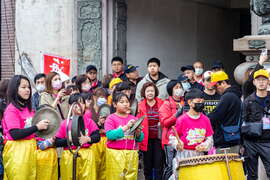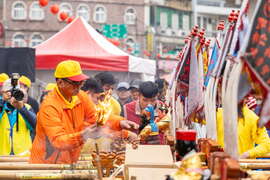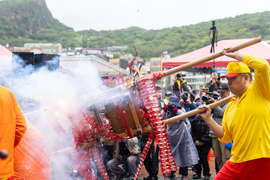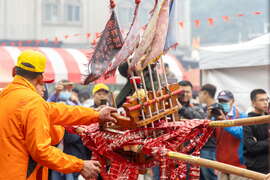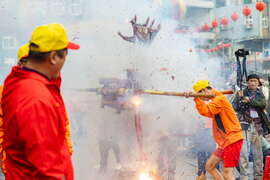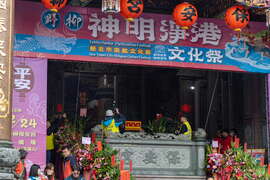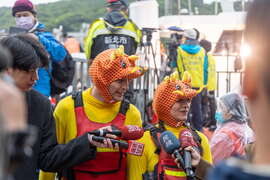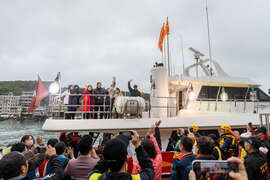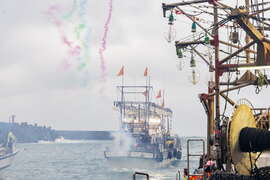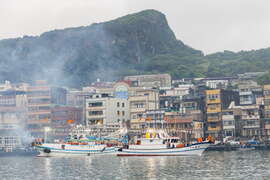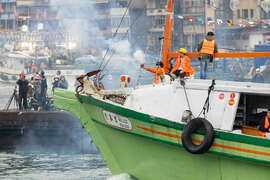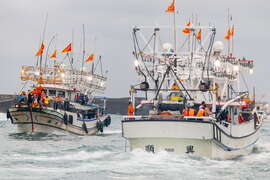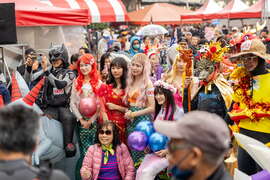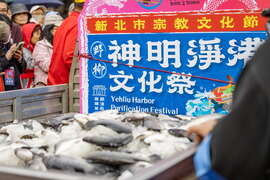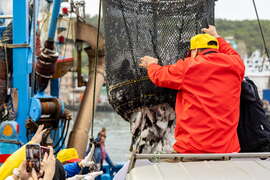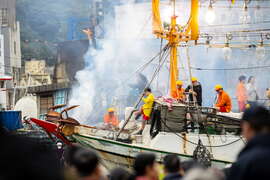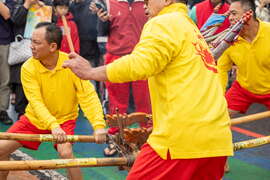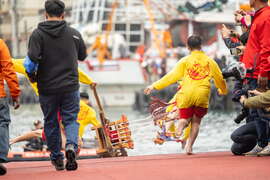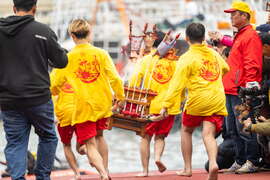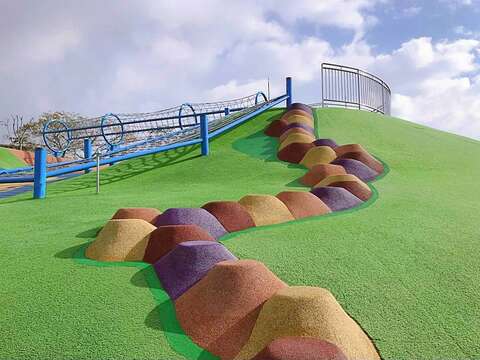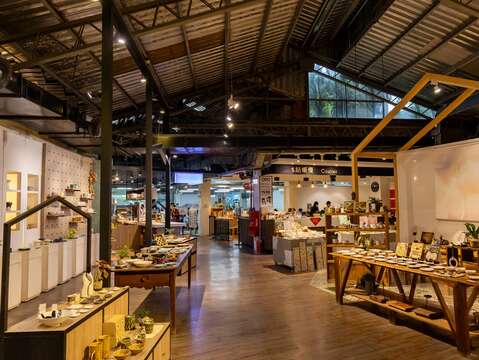“Get in the Sedan Chair!” “Let’s Go!” Yehliu Cultural Festival of Jumping into the Sea with Gods
Popularity 6052
Several decades later, a boat from Fujian struck a reef and sank. After the tragedy, Kai Zhang Sheng Wang entered the body of a spirit medium to indicate fishermen to offer sacrifices to pray for peace, not allowing the remains of victims to be brought to the fishing port. Kai Zhang Sheng Wang further indicated that He would go on an inspection tour around the port at Lantern Festival in person. Following the instructions of the God, young and strong residents in Yehliu carried the God’s sedan chair on January 15 of the lunar calendar, jumping into the cold sea water to expel ghosts and monsters at the port. This was the origin of jumping into the sea with gods in Yehliu.
Come in Water and Go in Fire
The tradition of jumping into the sea with gods in Yehliu has over one hundred years of history, and it is a unique activity at Lantern Festival at Taiwan’s Northern Coast. The tradition enjoys the fame with Sky Lantern Festival in Pingxi and beehive fireworks in Yanshui as they are all intangible cultural heritage. The four rituals of jumping into the sea with gods in Yehliu include “going on an inspection tour with gods on the sea,” “bringing back a whole cabin of catches,” “jumping into the sea with gods,” and “stepping on the bonfire with gods to expel evils and adversities.” Participating followers have to jump into the water with a god’s sedan chair first, and run toward the bonfire after they go ashore. Therefore, we say “come in the water, and go in the fire.” It is the most distinctive cultural festival in Wanli District.
Jumping into the sea with gods is an annual occasion in Yehliu. Residents and fishermen in Yehliu support the event by donating money and contributing their labor to plan it. It is an important activity that enables local people to work together as a team. The event of jumping into the sea with gods starts early in the morning, and followers and sacrificial service chiefs carry out the blessing ceremony successively in Baoan Temple. In front of the temple, you can see the spectacular performances of the lion dance of Yehliu Elementary School, beiguan music club, and god’s generals. It is difficult to take your eyes off the performances, and you can hear the sounds of camera shutters one after another as well.
The temple workers carry the eight gods’ sedan chairs to the front of Baoan Temple. After they carefully place gods’ statues in the sedan chairs, they hang firecrackers on the sedan chairs. Strong and brave men carrying the sedan chairs move forward while firecrackers are being set off. For a moment, the sounds of firecrackers resound across the sky, going through the cloudy and rainy sky to the Heavenly Palace.
Going on an Inspection Tour with Gods on Sea
The lead boat sets sail with people’s blessings, kicking off the event of going on an inspection tour with gods on the sea. Over ten fishing boats follow the lead boat in order and dash out Yehliu Fishing Port amid the loud noise of firecrackers. During the one hour of the inspection tour, all fishing boats circle around Yehliu Fishing Port three times to pray for plentiful catches and safety.
Bringing back a Full Cabin of Catches
After an inspection tour on the sea, fishermen will open their cabin and crane up a full load of catches to the truck before they return to Baoan Temple. This means that fishermen will get a full load of catches on their each voyage this year. Next, the city mayor will host a charity auction for catches, where competitive bidding can be seen at the scene.
Jumping into the Sea with Gods
The highly anticipated event of “Jumping into the Sea with Gods” starts in front of Baoan Temple as people shout “get into the sedan chair” and “let’s go” loudly. Strong and brave men in Yehliu carry the eight gods’ sedan chairs for Kai Zhang Sheng Wang, Mazu, General Zhou Cang, the Lord of Land and so on, and they brave the cold and dash into the fishing port amid the loud cheers of people. The scene is exactly the same as the one when Kai Zhang Sheng Wang went on an inspection tour at the fishing port over one hundred years ago. The ceremony is held to expel ghosts and spirits, praying for favorable weather and safety.
In recent years, the event has changed with the times: people are welcome to join the activity of jumping into the sea with gods, and a design competition is held. After gods’ sedan chairs arrive at the fishing port, 100 people are welcome to participate in the event of jumping into the sea. The year 2024 is the year of the dragon, so quite a few participants wear clothing with the style of the dragon to celebrate the year of the dragon and pray for safety in the coming year.
Stepping on Bonfire with Gods to Expel Evils and Adversities
After strong and brave men carrying gods’ sedan chairs jump into the port, they have to swim across Yehliu Port with the sedan chairs. After they come ashore, they are ready to step on the bonfire. When it is time, the shouts of “get into the sedan chair” and “let’s go” echo throughout Yehliu, and strong and brave men carry gods’ sedan chairs and step on the bonfire that has been sprinkled with salt and rice barefooted to purify calamities on their bodies. After doing this for three rounds, they complete the ritual of “coming in the water, and going in the fire.”
Being led by the beiguan music club, gods make a pilgrimage procession around the fishing port to protect Yehliu. The cultural festival of jumping into the sea with gods originated from a mysterious unmanned boat drifting on the sea over one hundred years ago. After Kai Zhang Sheng Wang was brought ashore by local fishermen, He entered the body of a spirit medium to go on an inspection tour at the port to protect the safety of Yehliu Fishing Port. Residents in Yehliu, in return, pass down the tradition. The event of jumping into the sea with gods is not only a special activity at Lantern Festival, but also a shared memory of residents of different generations in Yehliu.
